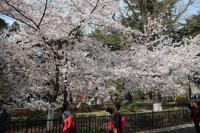Introduction
Planting trees is an essential component of preserving our environment and combating climate change. The natural benefits of trees are endless, from providing oxygen to improving air quality and reducing carbon dioxide in the atmosphere. As such, there is a growing interest among many individuals and organizations in planting trees. However, the question of how much it costs to get trees planted is an important one to consider. In this article, we will explore the various factors that influence the cost of planting trees and provide an estimated cost range for tree planting.
Factors that Influence the Cost of Planting Trees
The cost of planting trees can vary significantly, depending on multiple factors. Some of the most influential factors include:
The number of trees to be planted
The size and type of trees to be planted
The location and accessibility of the planting site
The level of preparation required for planting (e.g., clearing land, preparing soil, installing irrigation systems)
The cost and availability of labor and materials
Cost of Planting Trees
The cost of planting trees can vary widely, depending on the factors mentioned above. According to estimates from the National Tree Benefit Calculator, the cost of planting a single tree can range from $50 to $250 or more. However, the cost per tree is typically lower when planting larger quantities of trees.
For example, a large-scale reforestation project may cost anywhere from $500 to $2,500 per acre, depending on the location, soil conditions, and the number and size of trees being planted. Similarly, the cost of planting a mature tree on private property can range from $300 to $1,500 or more, depending on the species and size of the tree, as well as the preparation work required for planting.
Ways to Lower the Cost of Tree Planting
While tree planting can be costly, there are several strategies that individuals or organizations can utilize to reduce the costs. Some of these strategies include:
Planting smaller trees
Choosing trees that are native to the area, which may be more affordable
Recruiting volunteers to assist with planting
Seeking out discounts or grants from local governments, non-profits, or tree planting organizations
Planting trees during slower periods for arborists or contractors, when prices may be lower
The Benefits of Planting Trees
Despite the cost of planting trees, it is essential to note that the benefits far outweigh the initial investment. Some of the benefits of planting trees include:
Improving air quality and reducing the amount of carbon dioxide in the atmosphere
Providing shade and reducing energy costs through natural cooling
Reducing soil erosion and preventing water pollution
Creating habitat for wildlife and preserving biodiversity
Enhancing the aesthetic value and overall quality of life in a community
Conclusion
Planting trees is essential to preserving our ecosystem and mitigating the impacts of climate change. There are several factors that influence the cost of planting trees, but the benefits far outweigh the investment. With careful planning, cost-reducing strategies, and the support of local governments, non-profits, and tree planting organizations, tree planting can be an affordable and accessible means of bolstering our environment and creating a more sustainable future.

 how many times do yo...
how many times do yo... how many planted tre...
how many planted tre... how many pine trees ...
how many pine trees ... how many pecan trees...
how many pecan trees... how many plants comp...
how many plants comp... how many plants can ...
how many plants can ... how many plants and ...
how many plants and ... how many pepper plan...
how many pepper plan...





























